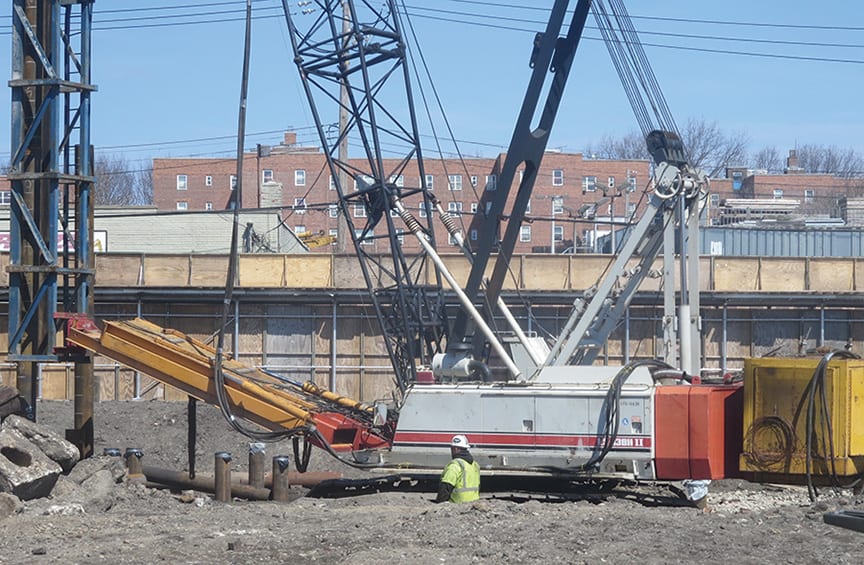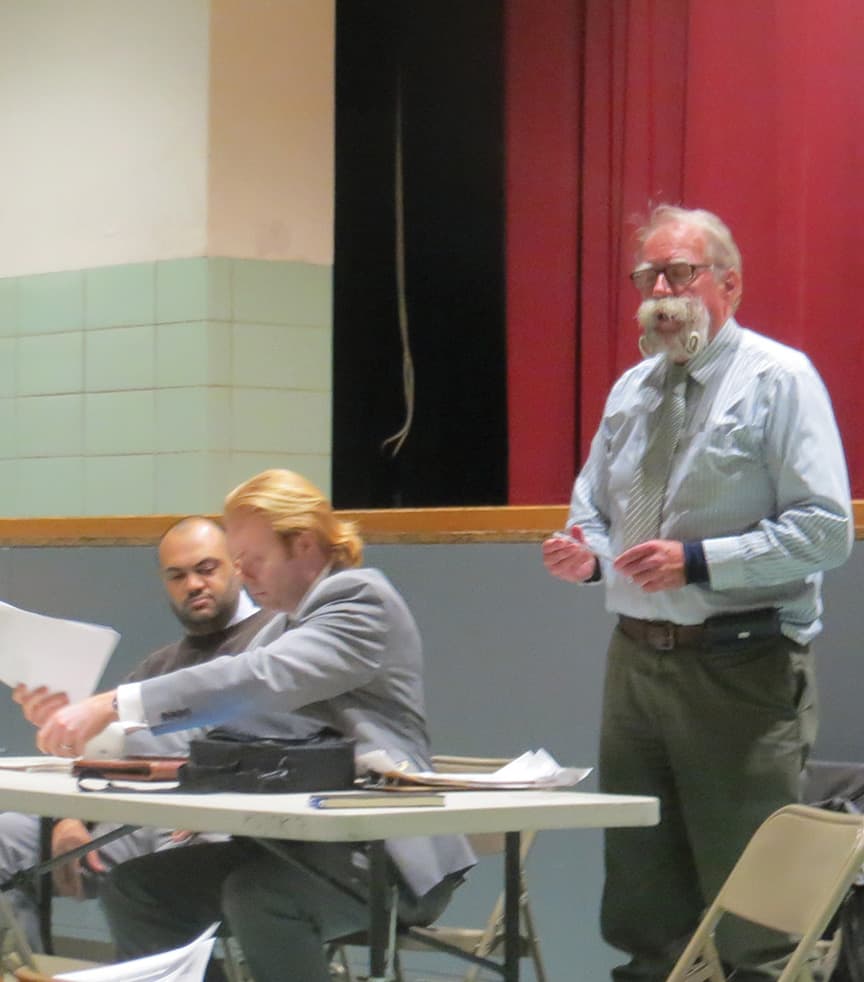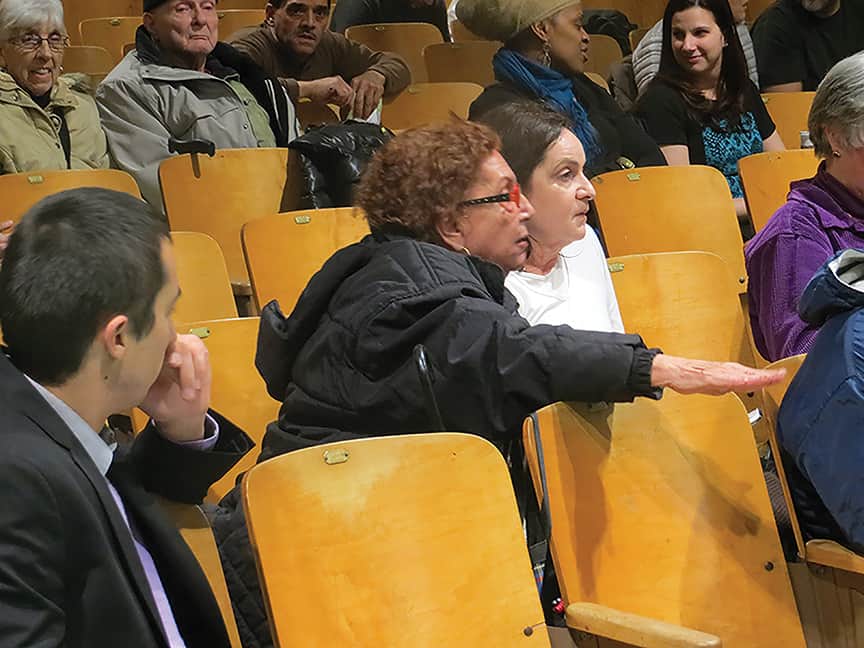A topic that the short-lived Red Hook Coalition attempted to tackle a few years ago was the many vacant lots that dot Red Hook. As the real estate market has begun to take care of that problem itself, a new problem has taken its place – pile driving.

Since Red Hook is now in a FEMA designated flood zone, most new structures are designed to be elevated – meaning they will be built up and supported by piles driven into the earth. Because of the soil conditions, even houses that won’t be elevated may still use piles for support.
Building is proceeding apace, and according to Civic Association president John McGettrick, pile driving may likely take place at the 23 new townhouses being built on Verona at Van Brunt; 87 Wolcott Street, 15 Luquer Street, 422 Van Brunt and 185 Richards/61 Dikeman.
There are at least two hazards when piles are driven. The driving creates strong vibrations which can damage adjacent buildings. Another side effect is the movement of the earth, especially in soft soil/clay areas, of which Red Hook is one. Soil displacement can undermine neighboring foundations. Many Red Hook homes, being old and having suffered flood damage, are already on shaky ground – more shaking is not helpful.
With all this in mind, McGettrick invited two gentlemen from the NYC Buildings Department who were featured at the latest Civic Association meeting on March 3 in the PS 15 auditorium. Patrick Wehle, Community Affairs Director, Department of Buildings [DOB]. This is a position formerly held by Eddie Bautista. He was accompanied by Ben Colombo, from the DOB Community Affairs, who mostly sat next to Wehle and listened.

Wehle began with a long statement about pile driving. Reading from his iPad, he started by saying that pile driving is an ‘as of right’ activity – meaning that no special permission is required from the Board of Standards and Appeals or from City Planning.
He went on to describe two types of pile driving – pounding and auguring. Pounding causes more vibrations but is cheaper than auguring. Auguring refers to piles that are screwed in the ground. Other types of piling include helical and wood piles.
He explained that the building department is concerned with safety, especially that of adjacent buildings. A contractor planning to drive piles must notify neighbors ten days in advance, and must work only from 8 am – 6 pm. Driving can be noisy, and a noise mitigation plan is supposed to be filed with DOB.
Stop work orders can be issued when vibrations exceed a certain threshold.
Many important questions came up afterwards, which the two gentlemen promised to field. They did their best, but often had no answer, and promised to get back to people following the meeting.
One very interesting case was not about actual pile driving, but rather a metal stamping machine that has been driving Veronica Vanaria and her neighbors crazy. Vanaria, who has had to completely rebuild her Van Brunt Street home after Sandy, claims that vibrations from nearby Gotham Metalworks are both dangerous and greatly impinge on her quality of life.
She has been rebuffed in attempts at dealing with the proprietors, and calls to 311 have not yielded any relief. Wehle jotted the information down and promised to look into it. After the meeting, McGettrick spoke to her as well and said he would put the Civic Association behind her complaint.
Earlier this year, an environmental complaint against a neighborhood roofer whose smell of burning tar was plaguing the neighborhood was dealt with on a community basis, and a solution was found that satisified both the business and its neighbors.

Sue Amendola complained about demolition taking place on Sullivan Street. She claimed that the noise was so loud it disturbed her from across the street.
Mark Chin commented that he lived near a pile driving site in which the entire project was finished in a day. This rush prevented the buildings department from being able to file a stop order request, since by the time they could act on the complaint, the pile driving was done. Wehle said he had never heard of such a case, but said that DOB can work quickly if need be.
A lawyer who specializes in pile driving cases then addressed the auditorium. He soon got to the crux of the matter. He said that plenty of legal protection exists for buildings adjacent to pile driving activities. Real time vibration equipment can monitor the work, with results shared with DOB. However, there is a cost to the home-owner that could reach thousands of dollars.
Many homes in NY are worth hundreds of thousands and millions of dollars. For those property owners, a few thousand is not a big price to pay in order to protect their investment. However, many Red Hook homeowners are not wealthy, and are unable and unwilling to incur a hefty legal bill.
That is a big part of the problem, and one which will stay on the plate of the Civics Association and other local leaders in months to come.








